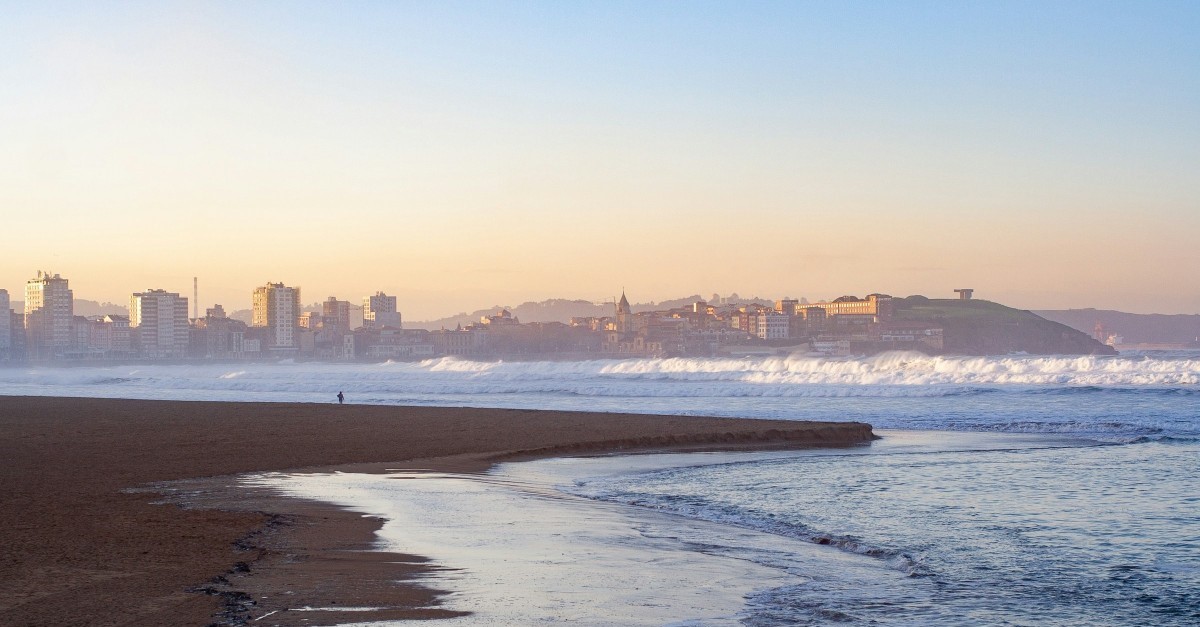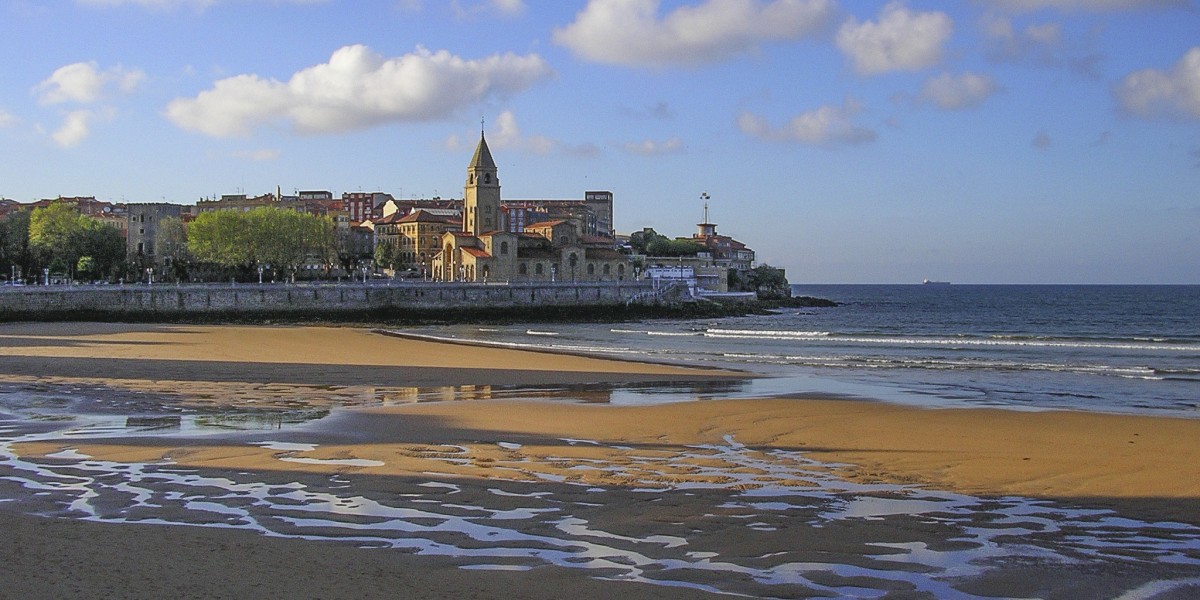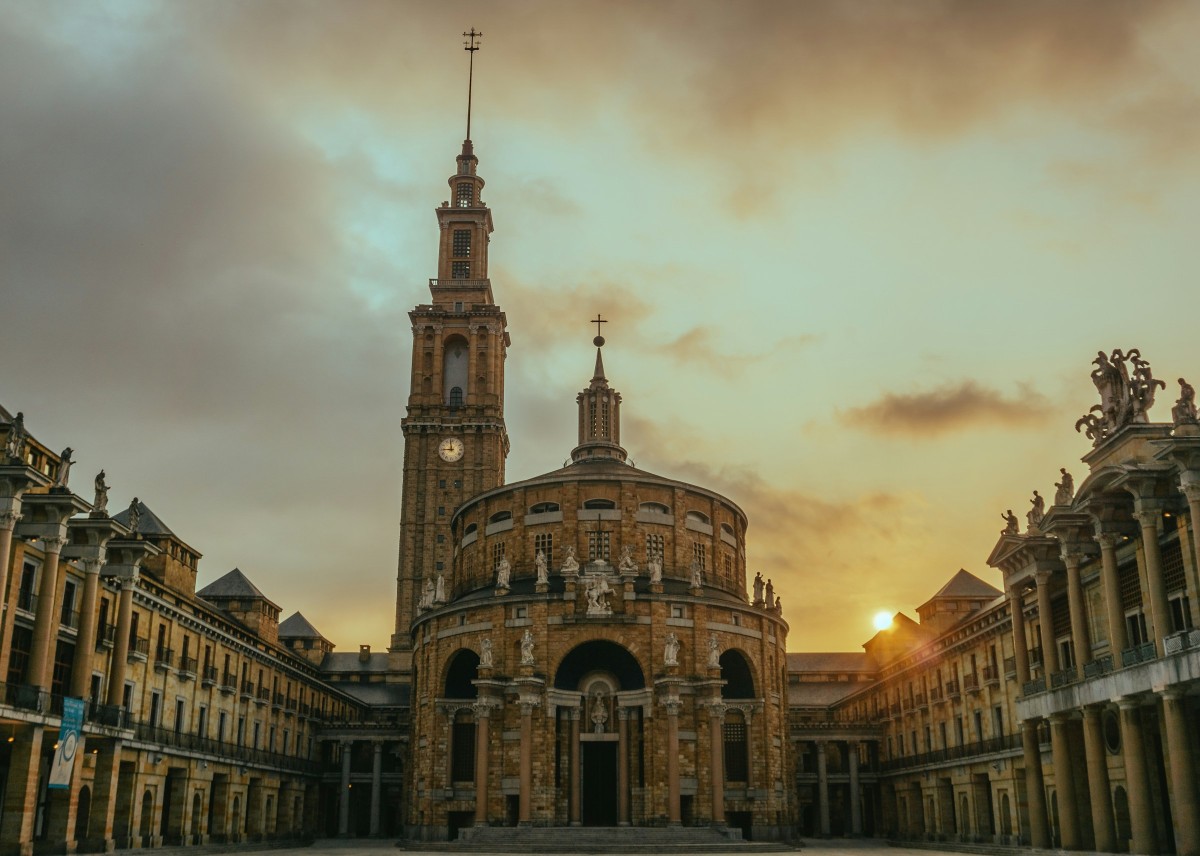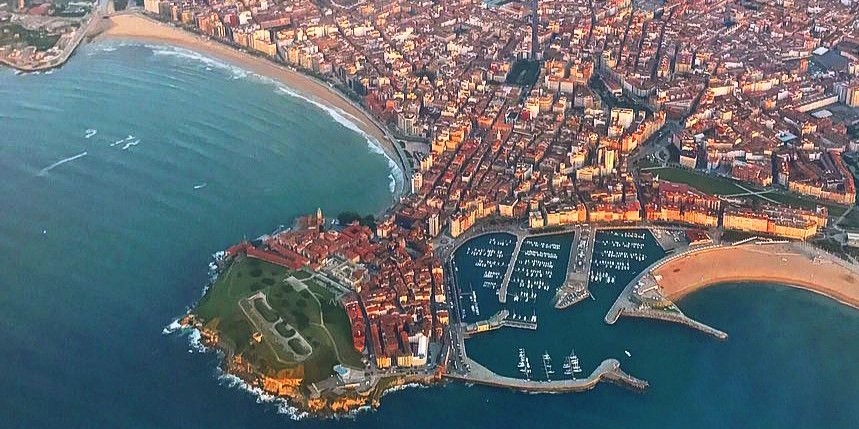
Located on the Cantabrian coast in Asturias, Gijón is a very interesting destination to visit. From its extensive beaches to its excellent cuisine, this city has a lot to offer visitors.
Known for its natural landscape and its cultural heritage, the Asturian city has many attractions that you need to know about if you are planning a trip there. Read on to discover what you can't miss in Gijón depending on your length of stay.
What to see in Gijón in 1 day
Although one day may seem too short to explore this city, if you plan your itinerary well, you will be able to enjoy the most important sights. Even if you're thinking about what to see in Gijón in an afternoon, consider the following:
- San Lorenzo Beach: start your day with a stroll along this vast beach overlooking the Cantabrian Sea and one of the most emblematic spots in Gijón.
- Elogio del Horizonte sculpture: Eduardo Chillida's sculpture, located on Santa Catalina hill, is a viewpoint offering panoramic views of the city.
- Cimadevilla neighbourhood: this is the historic heart of Gijón. It has narrow cobbled streets, ancient architecture and modern bars with local food.

What to see in Gijón in 2 days
If you decide to extend your stay in Gijón, there are even more gems to discover. You can add these points of interest to the list of things not to miss.
- Atlantic Botanical Garden: an oasis of peace that allows you to browse the flora from different areas of the world and better understand the local ecosystem.
- Jovellanos Birthplace Museum: delve into Gijón's history by visiting the birthplace of Jovellanos, a key figure in the Spanish Enlightenment and a native of the city.
- Universidad Laboral: visit this building, the largest in Spain by area, and enjoy the panoramic views from its tower.
- Gijón Aquarium: perfect for families or nature lovers, this aquarium offers an insight into the marine life of the Bay of Biscay and other parts of the world.
What to see in Gijón in 3 days
With an extra day, you can explore even more of Gijón's rich culture and nature. Here are some extra tips to make the most of your days in the Asturian city.
- Asturias Railway Museum: for history buffs and tech enthusiasts, this museum offers an insight into the evolution of the region's railways.
- Jovellanos theatre: check out the programme and see a play or concert in Gijón's emblematic theatre.
- Sculpture trail: Gijón has countless works of public art. Spend a few hours walking around the city and discover these open-air artistic creations.

Visiting Gijón with children
Gijón is an ideal destination to enjoy with the whole family, thanks to a wide range of activities for the little ones. One of the first stops should be the Gijón Aquarium. This type of attraction is always fascinating for children and adults alike.
Another excellent option is the Atlantic Botanical Garden, where children can enjoy being in nature and take part in family workshops that change according to the season. For a more cultural experience, the Universidad Laboral offers guided tours including kid-friendly activities.
Don't forget to squeeze in a visit to the Asturias Railway Museum, perfect for little train enthusiasts.
Asturian food, one of the best in Spain
Gijón and Asturias' gastronomy is considered one of the best in Spain. A must-try classic is fabada asturiana, a stew made of white beans with chorizo, black pudding, and bacon. But the star dish is cachopo, consisting of two breaded veal fillets stuffed with cured ham and cheese. Such exquisite cuisine makes it well worth a visit to Gijón.
Be sure to try Asturian cider, the region's emblematic drink. Visit one of the many cider houses in the city where you can see the art of pouring the cider, where it is poured from high up so that as it falls it breaks against the rim of the glass. For seafood lovers, Gijón offers excellent options such as oricios (sea urchins), goose barnacles and shrimps.
Finally, don't miss typical Asturian desserts such as frixuelos, similar to French crepes, which can be filled with sweets or simply sprinkled with sugar.

How to get to Gijón
Being one of the nerve centres of Asturias, Gijón is reachable by many means of transport. These are the best ways to get there.
- Car: if you decide to travel by car, Gijón is well connected by motorway from all directions (west, east and south).
- Bus: several bus companies operate routes to Gijón from the main Spanish cities. Gijón bus station is located close to the centre.
- Train: in recent months, Renfe has introduced a high-speed track that connects Gijón with Madrid in less than four hours.
Surroundings of Gijón
Once in Gijón, we recommend you spend some time exploring the surrounding area. Asturias has a lot to offer thanks to its nature and landscapes.
- Avilés: only 25 minutes away by car, this city will surprise you with its old town and the Niemeyer Centre.
- Villaviciosa: nicknamed the apple capital of Asturias, Villaviciosa offers exceptional natural surroundings and the opportunity to taste authentic Asturian cider.
- Llanes: just over an hour's drive away, Llanes is an unmissable destination for its beaches and lively atmosphere.
- Covadonga: surrounded by mountain scenery, this is the site of the famous basilica and the start of many hiking trails in the popular Picos de Europa.
Living in Gijón
Living in Gijón is experiencing an environment where tradition and modernity merge in a city that stands out for its safe and friendly environment, mild climate and proximity to natural landscapes.
Moreover, the city offers an excellent infrastructure, with high-quality health and education services. It is also close to diverse landscapes such as the sea and the high mountains, making it ideal for nature lovers.
If you're thinking about living in Gijón, these are the options currently available.
